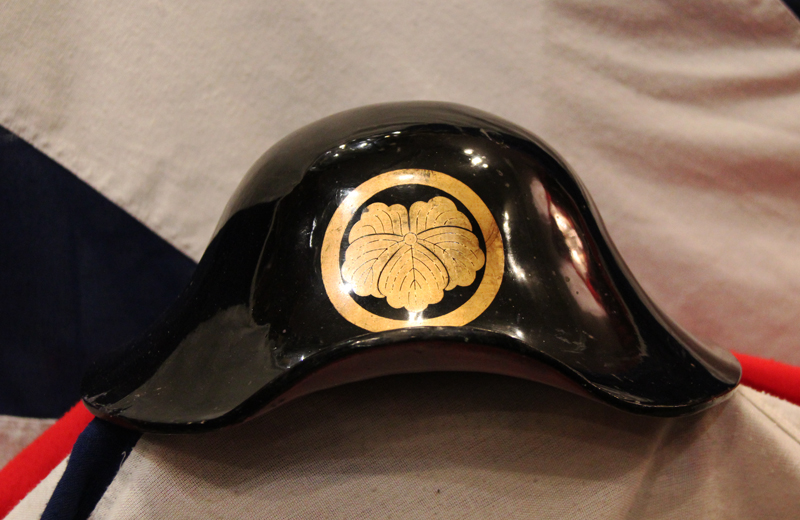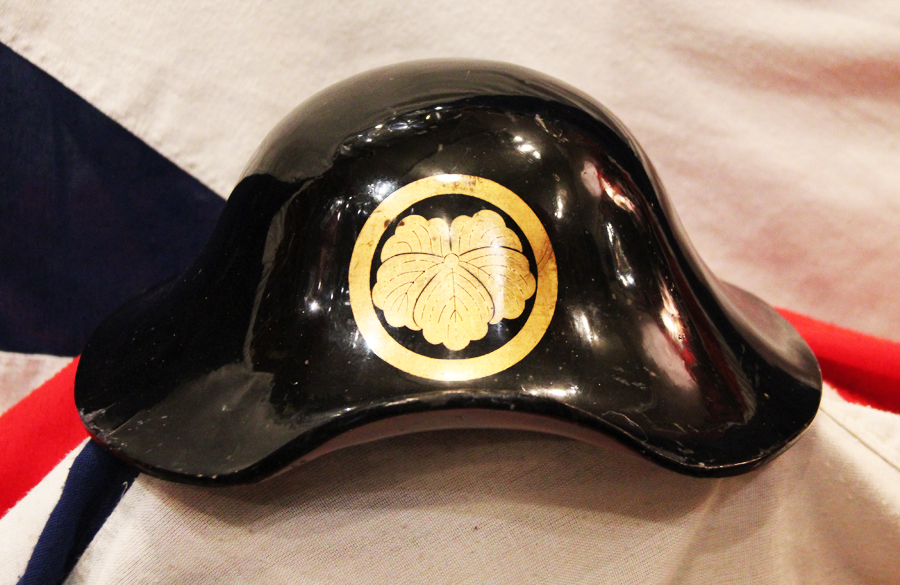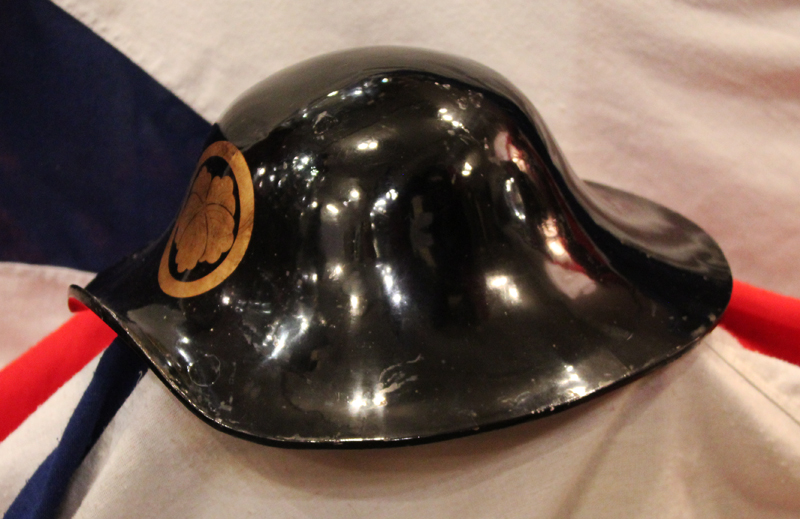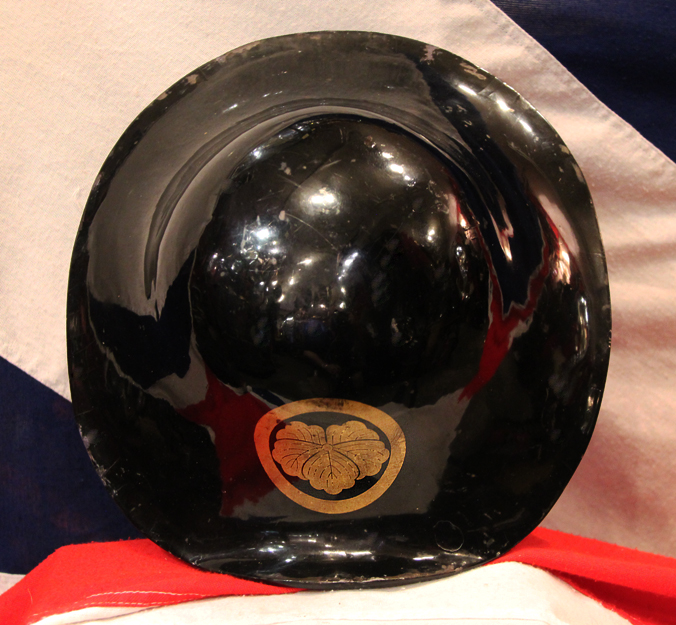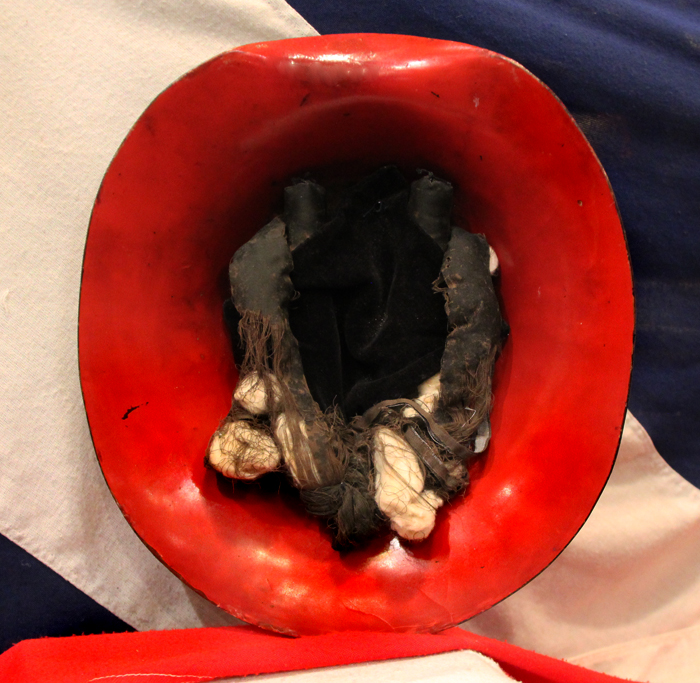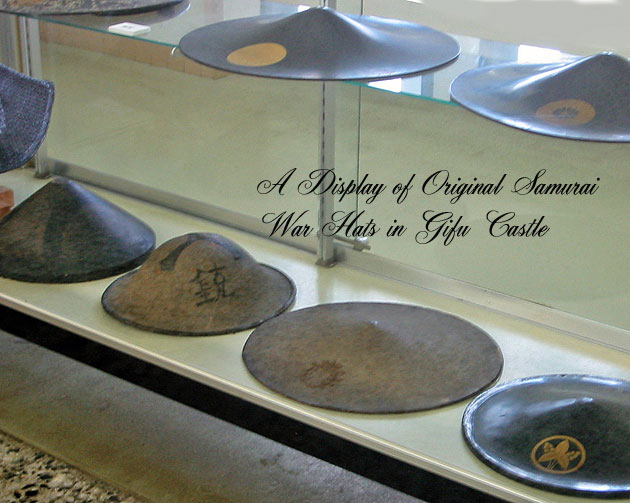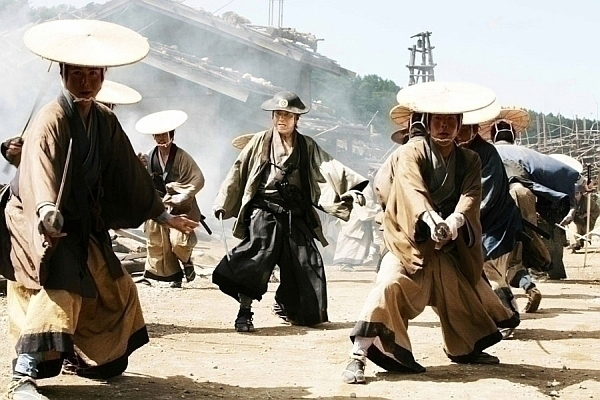A Beautiful Edo Period Batojingasa Samurai Horserider's War Hat
Black urushi lacquer with superb kiri mon, red lacquer interior with pad and cords but the cords outer silk has seperated. With five leaf pawlonia kiri mon. Paulownia is a deciduous tree that is widely cultivated in Japan. It belongs to the figwort family Paulowniaceae and it is also known as the “princess tree “ “emperor tree”. This tree was adopted as a crest motif because it symbolizes good fortune. In China, people consider it a lucky tree where phoenixes reside. It was also believed that these phoenixes sing “long live the king!” in the high, blooming branches of the tree. Because of this belief, the paulownia tree became a pattern used in the emperor’s clothes and then later became a crest during the end of the Kamakura period. This crest is awarded by the imperial court to retainers. The retainers also awarded the crest to vassals who had performed exemplary deeds. Apart from protection (the main function), a jingasa carried out the functions essential to caps: sunshade and rainshelter. It played too the role of a marker indicating the status of the wearer?s family in society. They were used as a container or weapon too. Jingasa developed both in shape and decoration during the Edo era (1603-1867) and were a symbol of samurai culture. The Jingasa was a conical helmet most commonly worn with Ashigaru Armour. It was typically made of hardened lacquered leather, but also sometimes with iron. The jingasa would also commonly be marked with the mon of the lord or clan to help identify the warrior's side on a battlefield.
Cherished for its infinite versatility, urushi lacquer is a distinctive art form that has spread across all facets of Japanese culture from the tea ceremony to the saya scabbards of samurai swords
Japanese artists created their own style and perfected the art of decorated lacquerware during the 8th century. Japanese lacquer skills reached its peak as early as the twelfth century, at the end of the Heian period (794-1185). This skill was passed on from father to son and from master to apprentice.
The varnish used in Japanese lacquer is made from the sap of the urushi tree, also known as the lacquer tree or the Japanese varnish tree (Rhus vernacifera), which mainly grows in Japan and China, as well as Southeast Asia. Japanese lacquer, 漆 urushi, is made from the sap of the lacquer tree. The tree must be tapped carefully, as in its raw form the liquid is poisonous to the touch, and even breathing in the fumes can be dangerous. But people in Japan have been working with this material for many millennia, so there has been time to refine the technique!
Overall in very nice condition for age with small lacquer wear marks.
Code: 21723
1195.00 GBP

